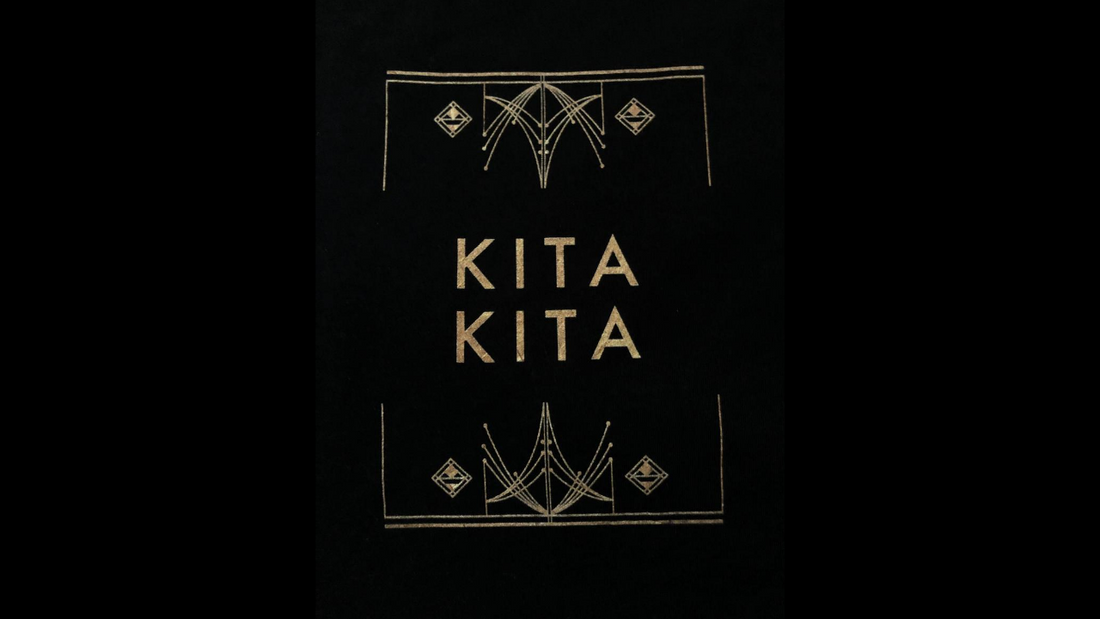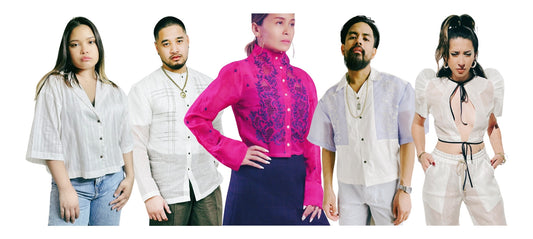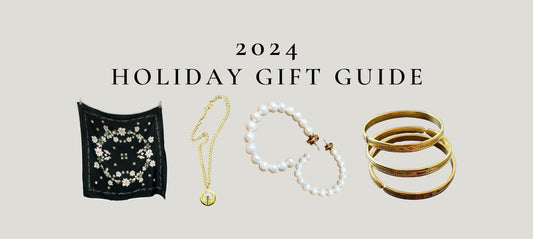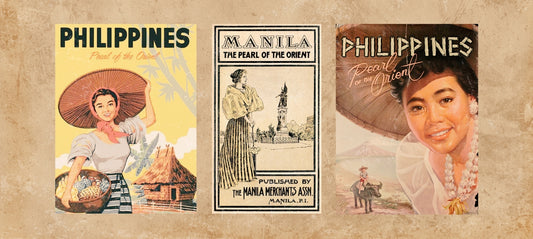In light of recent comments we’ve received from the public about VINTA’s production process, I would like to address some of the points being made.
The Discussion on Social Media — Ethical Sourcing
Concerns were raised on Instagram and Twitter about the Ifugao weave used for some of our more popular garments. Several women raised arguments about the problems of using an Ifugao print of a weave, and our use of an Ifugao weave that wasn’t directly sourced from an Ifugao weaver. The argument was that using this type of cheaper print rather than the traditional weave is a version of cultural appropriation. To that, I want to say, yes. I agree with you. The print is cultural appropriation. Period. We have always been transparent with the fact that some of the Ifugao weaves we use are not sourced directly from Ifugao weavers, but rather from a merchant in Manila. We have also been transparent with the fact that some are sourced from a reputable and credible source in Baguio, called Easter Weaving.
In this response piece, I want to talk about our textile supply choices, VINTA’s business model and commitments, and our plans for moving forward in light of the social media call out.
Background of VINTA
I’m sharing some history and context to show how these issues are complex, and require more time and space for our collective consideration than can be afforded by social media. I think it’s worth bringing up to fellow Filipinos reading and to VINTA’s supporters and customers that this company is a small business. 13 people, including myself, work at VINTA. We do not run a corporate conglomerate with m/billions in capital. We do not have the capital required to perfect our business model all at once. I am a Filipino-Canadian entrepreneur that has built this business from the ground up. I am an immigrant. I am a Kalinga descendant, and have a Kalinga family name but my family has no more ties to the region or the culture. I don’t have inherited generational wealth. I just paid off my student loans last year. The company is a labour of love that we try to improve with every passing day. VINTA is not simply about clothes, textiles, and fashion. It’s a part of the larger trajectory of my life’s work. The latest instalment in a 20-year career working to uplift critical Filipino culture through the arts and education, especially for members of the Filipino diaspora.
The VINTA business model is based on providing ready-to-wear and bespoke or customized pieces for a customer base in North America. Along with taking more time to create garments with care, the company also has been paying sustainable living wages to our sewing staff who create the garments in a small atelier setting (as opposed to a factory). Our sewers have come to VINTA from their previous companies for the salaries, benefits, and living conditions we offer that competitors don’t.
Using the Ifugao Print
Some of VINTA’s followers asked for more transparency around VINTA’s supply chain, and specifically wanted more details around the Ifugao print and the lower priced weave.
The Ifugao weave used by VINTA is sourced from an area of the Philippines called Divisoria — the oldest marketplace in Manila. The supplier sells it seasonally and markets the fabric as available for “costumes” — the kinds of costumes mostly made for kids to wear during Buwan Ng Wika for school.
Who is the merchant in Divisoria? We buy our supply from a Mindanaoan merchant who trades in Manila. I have actually asked them about their sources on several occasions. When I do ask, they usually give a vague answer. They usually say they get their textiles “from a friend in Baguio.” I haven’t tended to push these conversations further because my guess has been that they consider this information their “trade secret” — they don’t give away their source because revealing the information would be a threat to their business. In the early days of VINTA, I took their answers at face value and just went with it. The price point from this merchant, for our start-up business, worked.
Over the next couple of years, I tried to find a higher quality and ethical source for Ifugao, and other northern indigenous textiles. After finding Easter Weaving, I consulted a friend, who supports traditional Ifugao jewelry brass casters and weaving communities in Mindanao, Charisse Tugade. And I checked in with Marlon Martin, Ifugao Heritage School and Ifugao Nation Arts and Crafts founder. They both gave positive feedback about Easter Weaving.
In 2018, I actually began phasing out the New Ifugao Vest and was thinking about doing the same with the High Waist Ifugao Bahag Skirt and the Bahag Dress made with the lower cost Ifugao weave. But we kept getting restock requests from the community for them. So I brought the vest back and kept restocking the other pieces.
I want everyone to know that I am quite aware of the FACT that there is no 100% ethical production/consumption in the capitalist system we currently operate in. My eyes are open to this. The decision to use the printed Ifugao fabric came about this year. The print is made in China, by a Mindanaoan merchant — the same one I was getting the lower-priced Ifugao weave from in Divisoria. The reason for making this choice was that there were criticisms about our price points. By using the print, we would be able to create the more affordable pieces the VINTA community had asked for, while still paying sustainable wages for the skilled workers at the atelier. Not only did we want to maintain sewers’ sustainable wages and meet the needs of our predominantly Filipino clientele, but other factors that came into play were inevitable. [A sidenote: I used to deal directly with the mother of this said merchant since 2016, in 2017, she told me that they lost their home and all their property in the Marawi Siege. By the next year, this same woman had passed away from cancer. This is to say, we took time to build relationships with fellow Filipino merchants and business people, who all have their own stories. So, decisions we make are layered and not black and white.]
Making difficult choices — from the perspective of the business
Like so many businesses, the pending economic crisis is already affecting our business. Business has definitely been disrupted, but we’ve wanted to cause the least amount of disruption possible for our sewers. This is especially the case since a few of their spouses/family members have lost their jobs, so they have been put in more precarious positions while supporting their families during this trying time. Working with a more affordable fabric has helped maintain the livelihoods of the 10 women VINTA employs in Manila full time. This business, founded officially in 2016, still has not hit our break-even point, therefore not actually profiting... yet. And when the pandemic hit, I had to lay off a couple of people and cut down hours of others. I also gave up my own salary entirely (going on 3 months now) as the CEO, to keep paying VINTA’s sewers without interruption. I’m offering this information not for sympathy but to illustrate the difficult choices we’ve had to make at our small business in order to maintain during this time. And yet with the support of our community we were still able to raise almost $7,000 that we donated to feeding programs for people who had no means to put food on their families’ tables in light of the strict lockdown in Manila, among other causes.
Making difficult choices — from the perspective of the customer
The garment that uses the Ifugao print is a hot seller because of its lower price point, even through the pandemic, we are so grateful for everyone still supporting us. But I fully understand that using this print is unethical, as I have mentioned above. That said, the garments we make using fabric from Easter Weaving barely sells because the price point using these textiles is comparatively quite high. Our clientele is made up of almost entirely of Filipinos in the diaspora. And straight up, only a very small handful of you have bought garments that we’ve made with ethically sourced weaves (and thank you!). We understand the reason behind why anyone would choose the lower price point. Absolutely get it. I mean that’s why H&M and Zara business is still booming, right? The cost of affordability subjugates someone down the line, no question.
Moving Forward Together — Next Steps for VINTA
With all of that said, we want to move forward in the most constructive way possible. Here is a list of the steps we’re taking as a response to concerns with textile sourcing.
- As our printed Ifugao fabric runs out, we will no longer buy the printed material or make any garments with it.
- From this day forward, we will donate $5 USD from every garment sold that is made with that Ifugao print to the Ifugao Heritage School. We’ll do this until we sell out that inventory in the shop currently, and the inventory that is right now still being produced at the atelier.
- We are also now in conversation with Marlon Martin of Ifugao Nation Arts & Crafts to source textiles from them after we finish up with the Ifugao weave that we bought from our Mindanaoan merchant. The price point of garments we will eventually make with textile sourced from Ifugao Nation will bring up the cost of our loved styles as necessary.
As someone who has been doing the work, I am not done. Choices I have made are not immovable. There are intricacies of trying to build a business from an ethical foundation that are not clear cut. I think what is infuriating for me is the way that the public call out from kapwa/kababayans did not actually approach us in a way that is inclusive, respectful (i.e. direct) or kind. The method erased our context, and also the work we have been doing as a business, as people. The method of spreading it publicly rather than having a private dialogue about these concerns is the way it is now, the call-out culture of social media, especially in the context of this time. I get it.
And to be clear, the questions of sourcing have been asked and I have always answered with the truth of what I was doing. No one had actually ever challenged me on using the textile purchased from a merchant in Manila, or using the print of the weave, until the day before yesterday, publicly. I get it though, we are all here trying to fight for something, and trying to be on the right side of history, right? I know I am. I am addressing all these issues quickly and thoroughly because these are things that have weighed on me, despite what has been assumed and insinuated otherwise. At the end of the day, we are on the same side as our critics in this scenario. I am absolutely aware of the issues of indigenous people in the Philippines, and I absolutely own up to the choices that I’ve made that have hurt the Ifugao community, and I am sorry for it. And I’m atoning for it. But I am reminded of the divisiveness that often comes from kapwa / kababayans, while disappointing, is not new. Especially for me, having only ever worked within and for the Filipino community heavy for the last 20 years. I expected it to happen at some point.
As I have said before, we have always been transparent about all that we do. And I am always learning and listening and evolving, daily. I feel lighter in that the challenging has pushed me into the direction I wanted to go--faster, in all honesty. This feels really good, now. Taking our cue from our audience, we hold hope that VINTA customers will choose to invest in these types of pieces. Time will tell whether our community will be willing to make this investment with us. We are here, just doing our very best. Next time, y’all have any concerns about what we are doing, please email us, maybe? Be kind out there, kapwa. We are in this together, actually.
~ Caroline Mangosing







